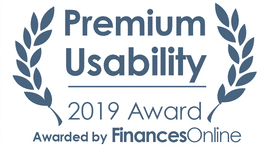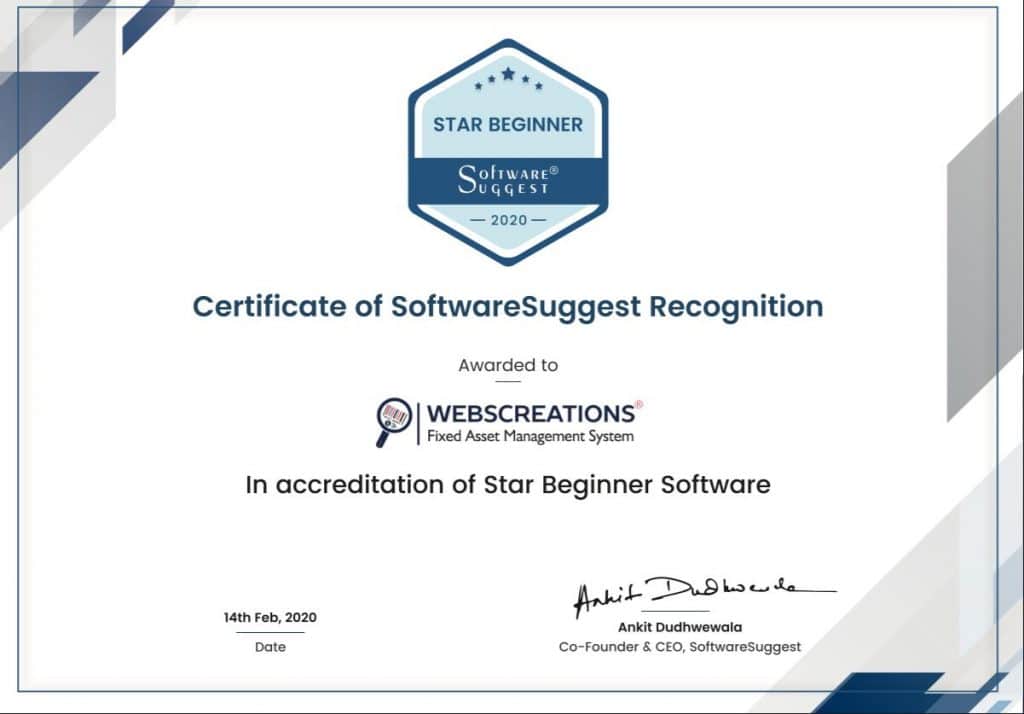5 Reasons Why You Need to Invest in Asset Tracking (AsseTrack) Software
Asset management activity has grown immensely thanks to the successful asset management technology and the benefits it has brought about for organizations of every size and scale.
According to Statista, “The global market for fixed asset management software is forecast to grow from 3 billion U.S. dollars in 2019 to 5.2 billion U.S. dollars in 2024. Fixed asset management software is used to streamline maintenance processes, extend the longevity of assets, and improve productivity.”
What Is Asset Tracking Software?
Asset Tracking Software is used for managing the entire fixed asset life cycle. It assists in maximizing asset operational life, from the procurement stage until the decommissioning phase. This software has also proven to be of great assistance in decreasing maintenance expenses and increasing productivity.
Asset tracking software is equipped to monitor the company’s assets, optimize and track its maintenance activities. It offers answers to all asset-related questions such as: what is the asset location, who is in possession of which asset, when is a particular asset or equipment in need of requiring upkeep, and so forth.
This software offers a centralized system and all the important information can be shared with everyone. Every user of the software gets to know the information about the assets. The system tracks the asset in real-time. However, for real-time asset tracking, there are many techniques are available such as QR Code (Quick Response Code), RFID (Radio Frequency Identification), NFC tracking (Near Field Communication), BLE (Bluetooth Low Energy), IoT (Internet of Things), etc.
Another goal of asset tracking software is to improve asset performance and control maintenance expenses. It helps in identifying non-performing assets too.
The solution offers several features that can be very useful for organizations, e.g. there is an organization which supplies assets to other organizations on rent. The question arises as to how many assets are returned when the contract gets over. With the help of this software, it becomes easy as the system triggers an alert for the organization to collect back their assets.
By the same logic, if the organization that has taken the asset on rent the asset is equipped with the software, then the responsible person will be alerted to return the asset on time and avoid penalties.
The asset owning company can also analyze assets to cross check if the using organization has kept the asset in the stipulated condition. If not, they can charge for those expense too as per the contract.
How Does Asset Tracking Software Increase Return on Investment for Organizations?
Asset tracking software is good for organizations in several ways:
Asset Tracking
Asset theft or loss affects an organization in many adverse ways. First, they need to buy the asset. Second, the organization’s operations also suffer. Third, the overall productivity will decrease.
Therefore, it is important to secure and save assets from theft especially the ones that are small or portable in size. The asset tracking software lets you know the real-time positioning of assets. Moreover, it lets you manage and monitor assets effectively. A tag or label is used for asset tracking through which you get real-time information about your assets.
This software is also equipped with Check in Check out software feature through which it can always be known to whom the asset is assigned. Hence, asset thefts or loss can be prevented.
Centralizing Information
This software streamlines the information and shares with everyone. Centralizing information becomes more important when an organization has several branches. Through such information, it is simple to find the actual financial worth of assets and it is great practical use when any audit and depreciation exercises are conducted.
Therefore, Asset management software makes the job easier for an organization by storing all information and data about assets in a centralized location.
Maintenance Expenses
This software assists in scheduling maintenance activity. Not just that, it saves expenses by recognizing unproductive items.
Moreover, under-maintenance also gives rise to diminished efficiency. Equipment maintenance has to be done on a regular basis. The equipment maintenance software helps in keeping track of maintenance activity.
The software enables organizations to keep track of their assets. This software automatically sends alerts and notifications about asset maintenance. When maintenance is carried out on time, unexpected breakdown instances are decreased and asset productivity increases.
Asset Life Cycle
Bad management of assets can make an organization to spend excessive money on maintenance.
During the entire asset lifecycle, an organization confronts several maintenance problems. These problems can have an impact on the bottom line of the organization.
Fixed Asset tracking software not only optimizes asset life, but it also optimizes asset performance. However, an asset must be upgraded, damaged parts need to be replaced from time to time. The company is well disposed to pay reasonable maintenance expenses rather than pay huge asset breakdown bills.
Better Decision Making
This software can help in the decision-making process in many ways, e.g. there are two different printers that need maintenance, but there is currently budget for one. So, which one you choose and how to decide?
Through the software, you look at purchase history and get to know that the first one was bought 6 years ago and the second one two years back. The decision can be simple. The first printer’s life is almost over and it can be replaced with a new one and maintenance carried out for the second printer.
The software assists in long term planning and goal setting with the data collected from the assets. Moreover, it lets you prioritize tasks. When you analyze data and gather the information, you are in a commanding position to take better decisions for business profitability and growth.







